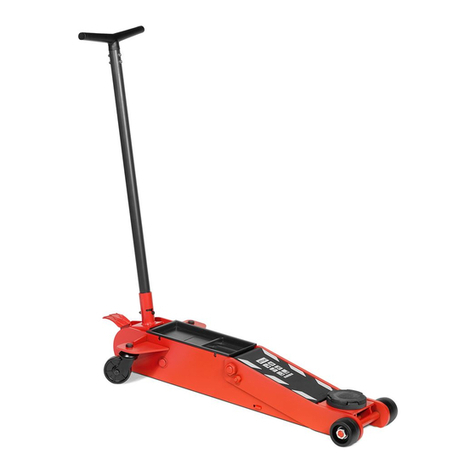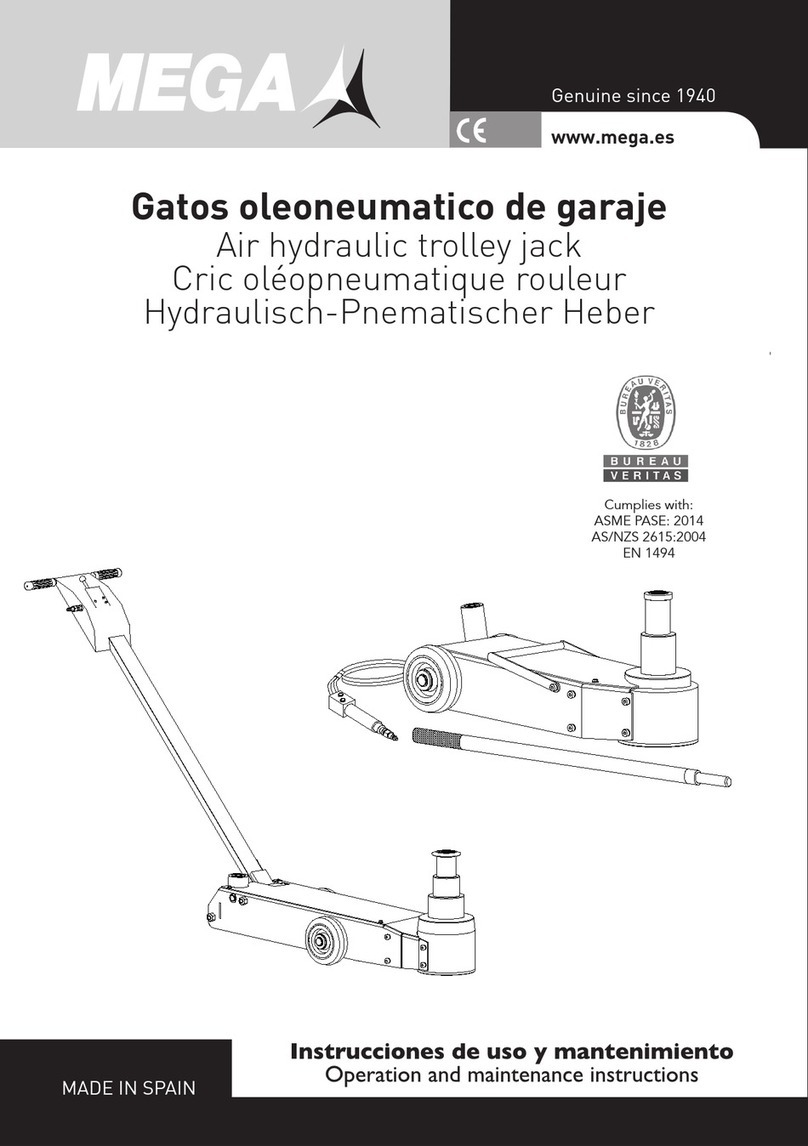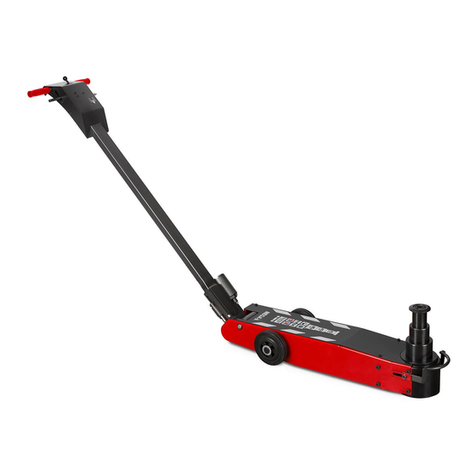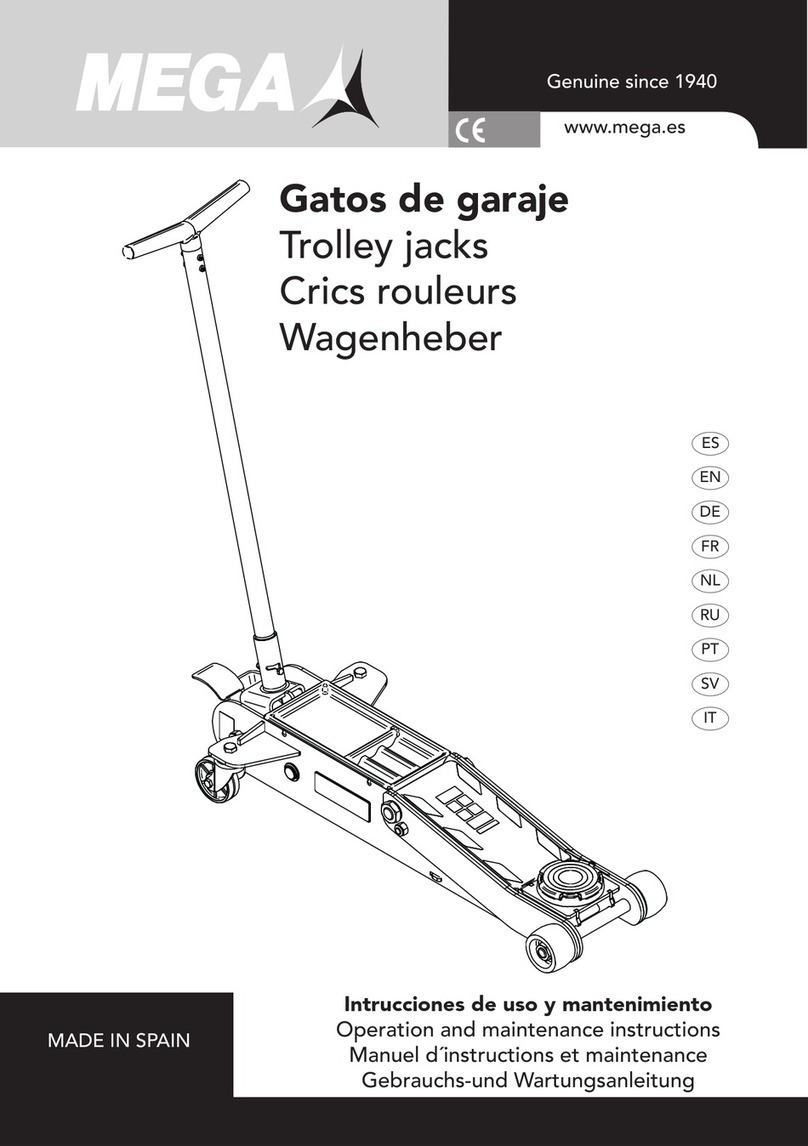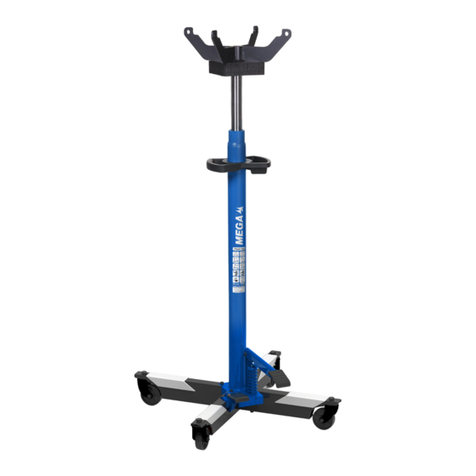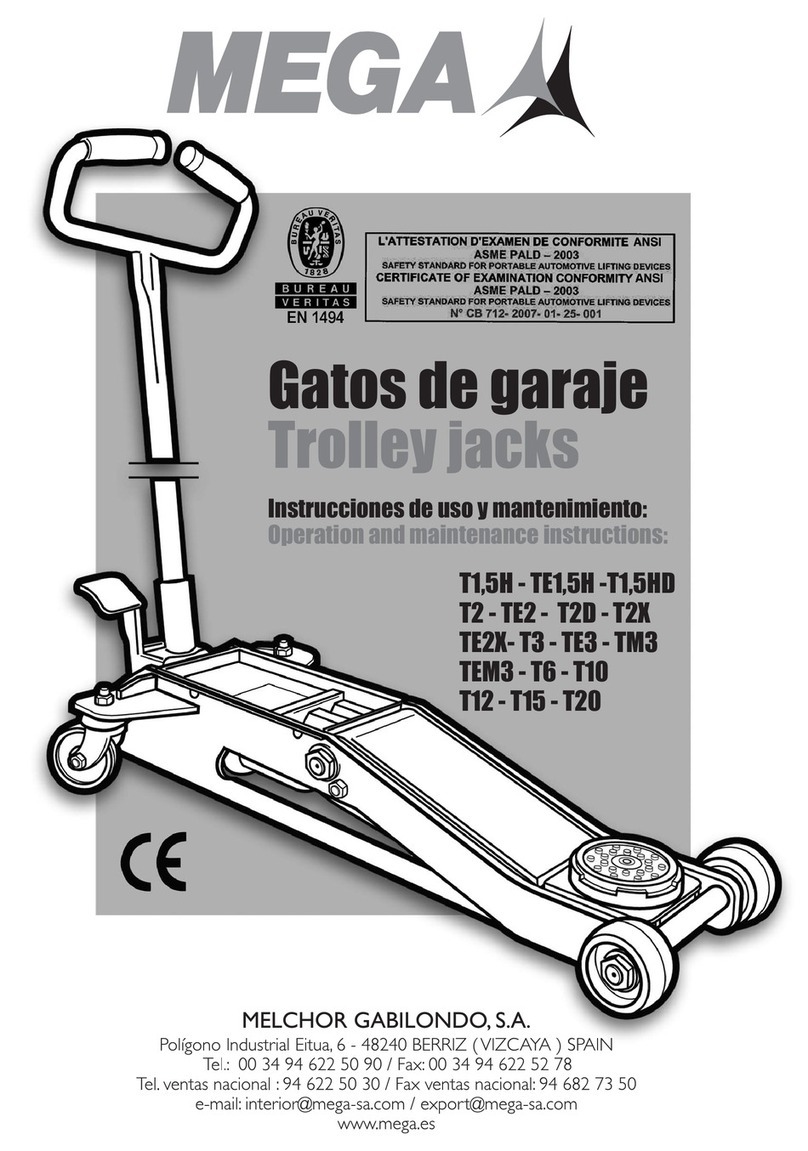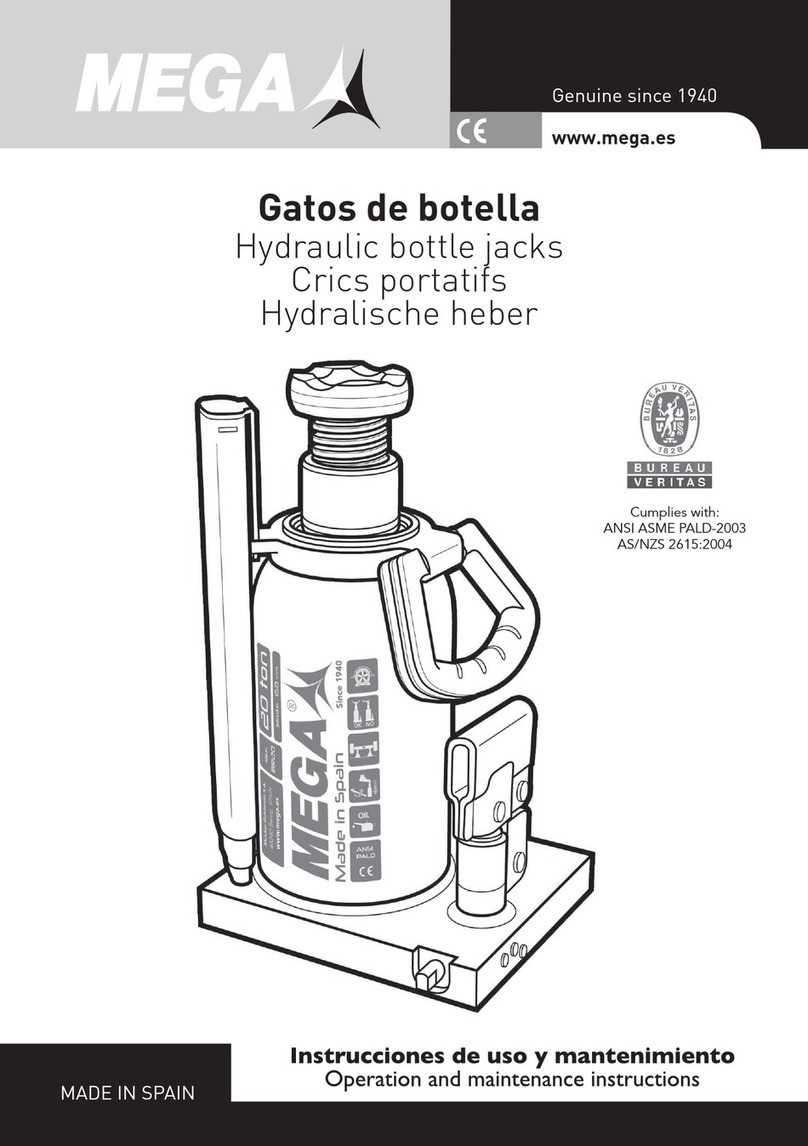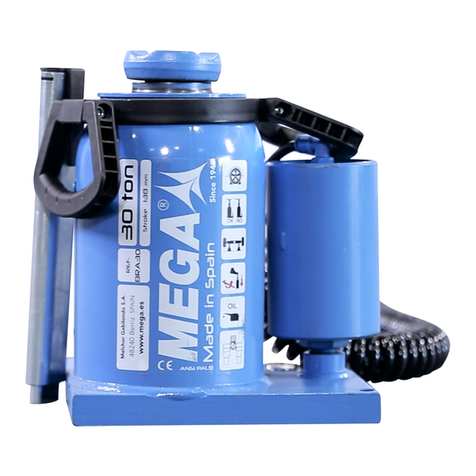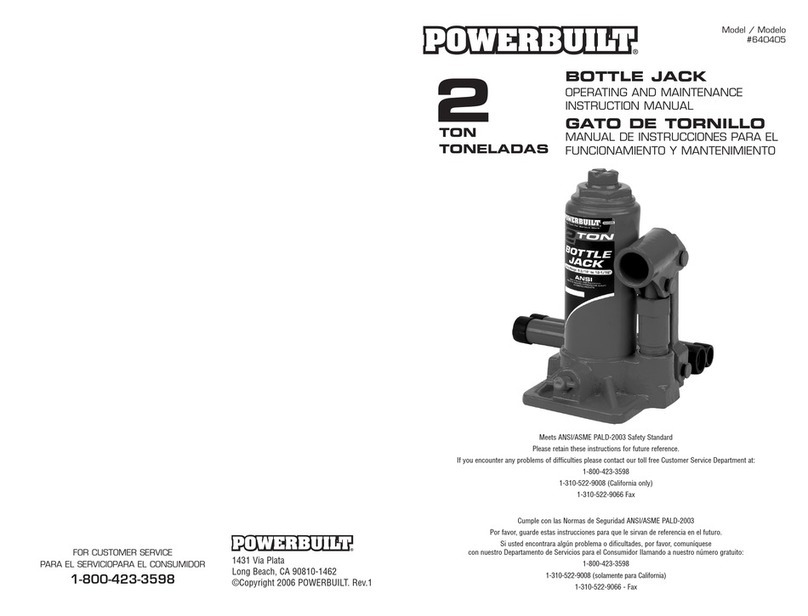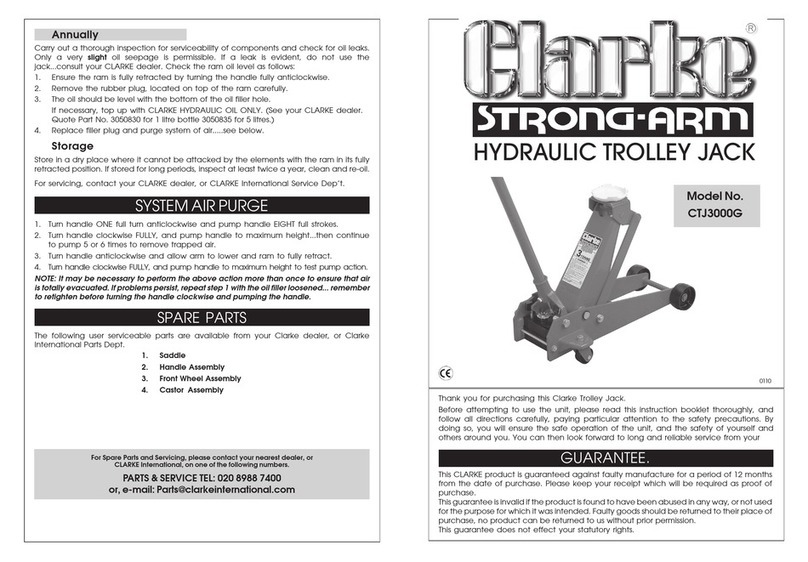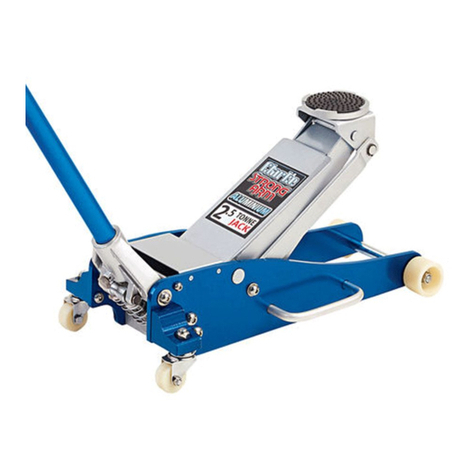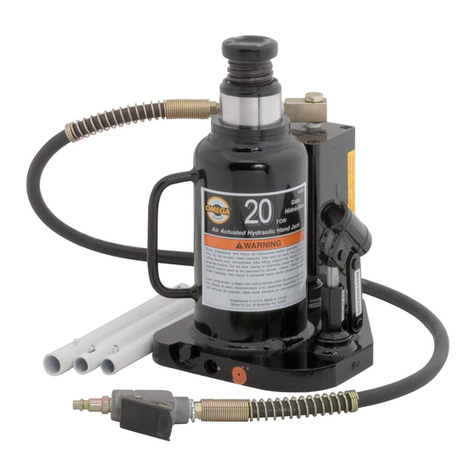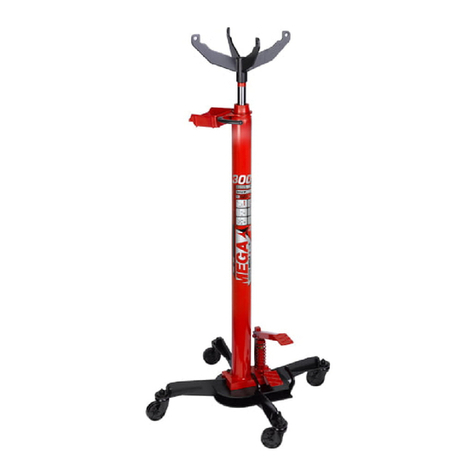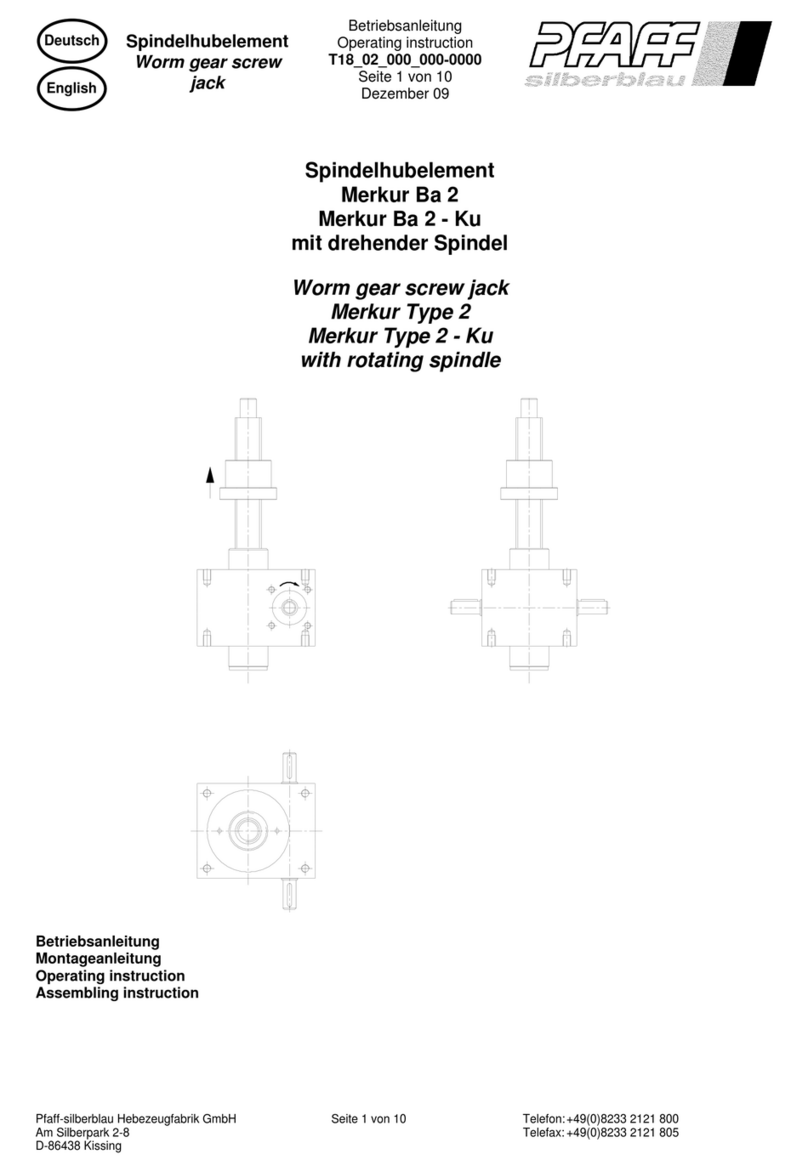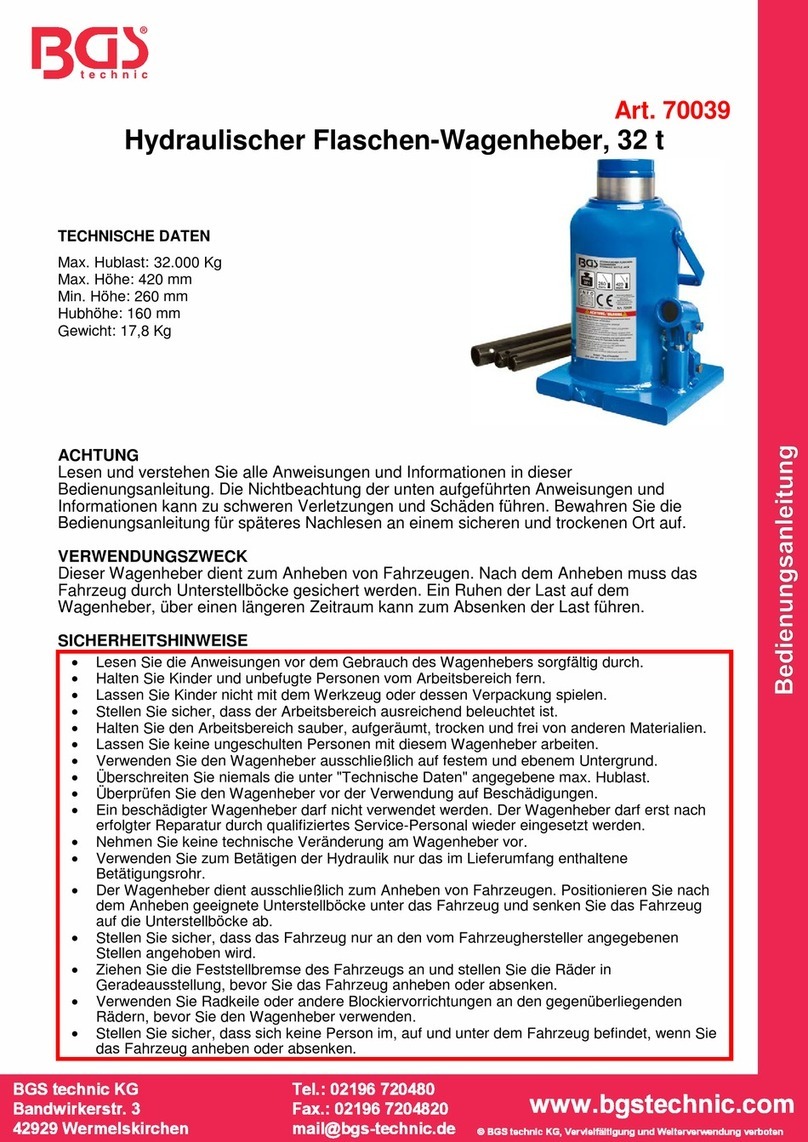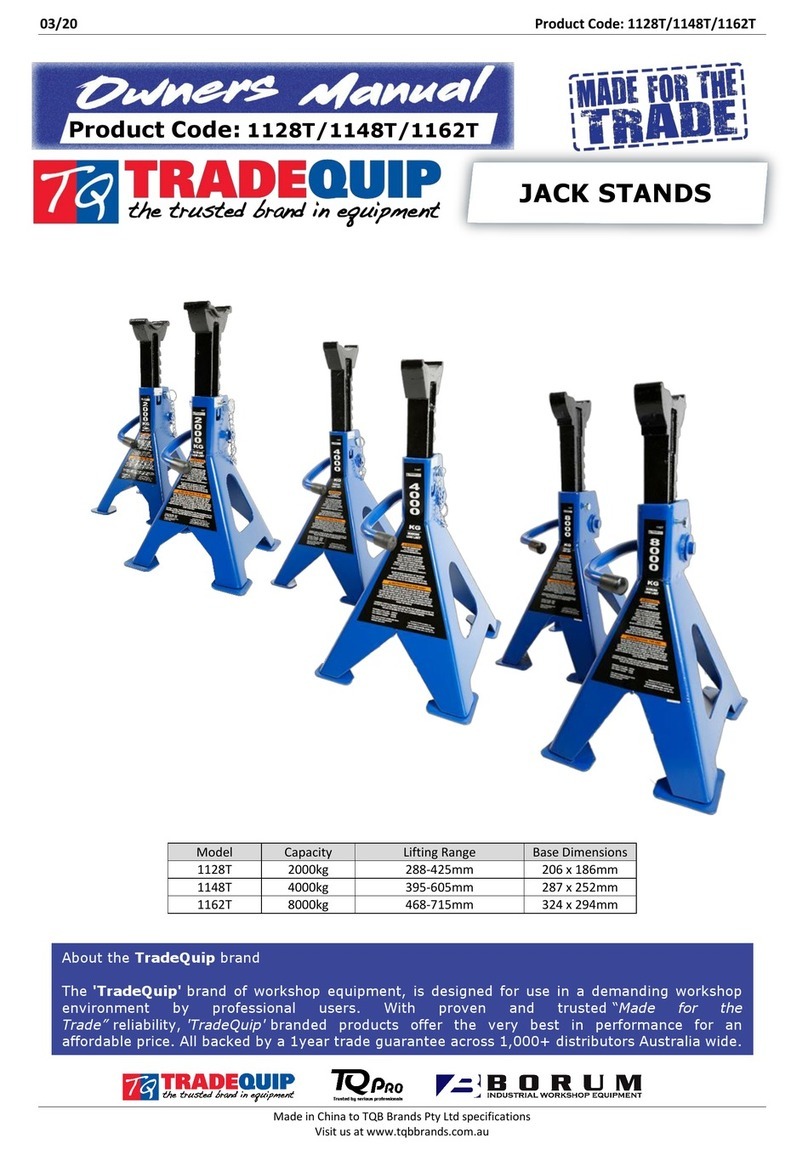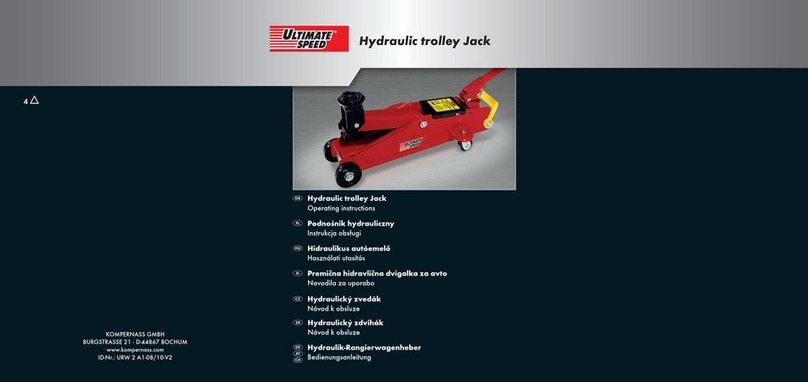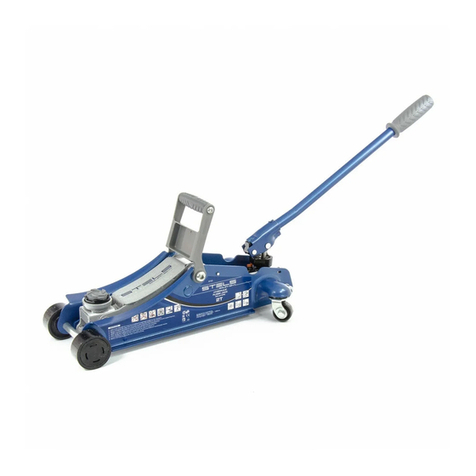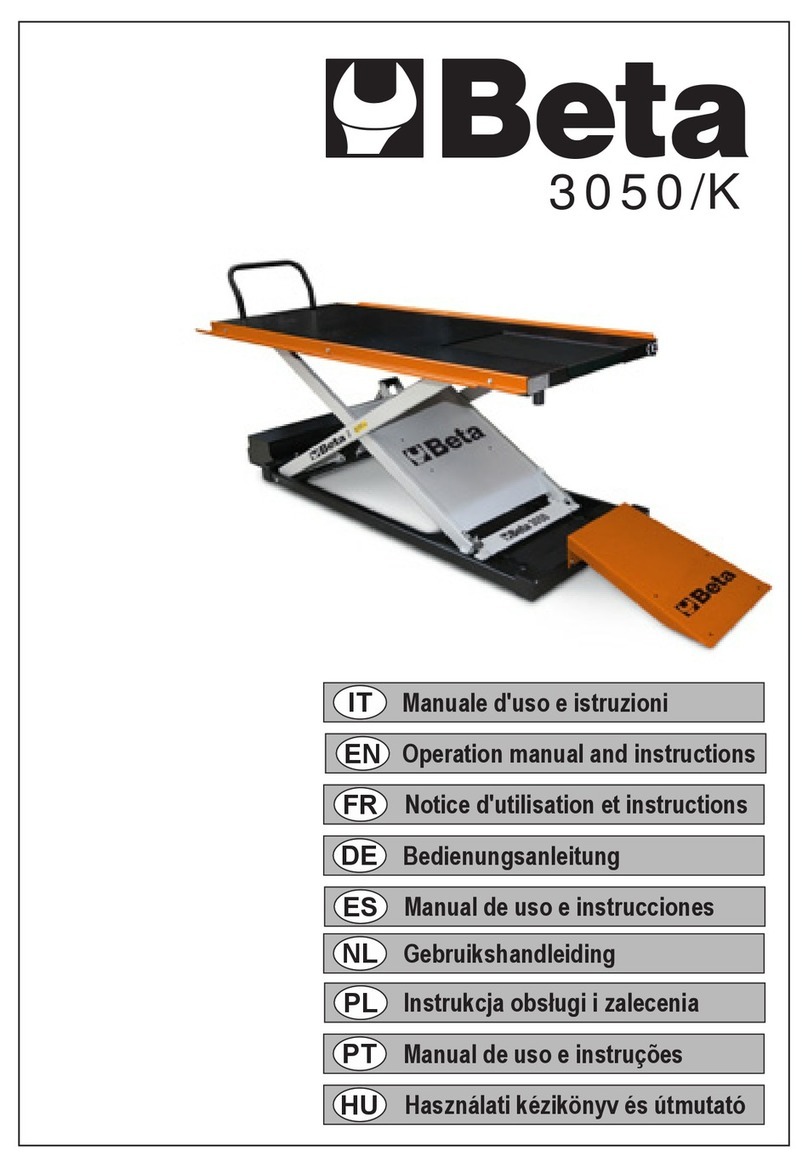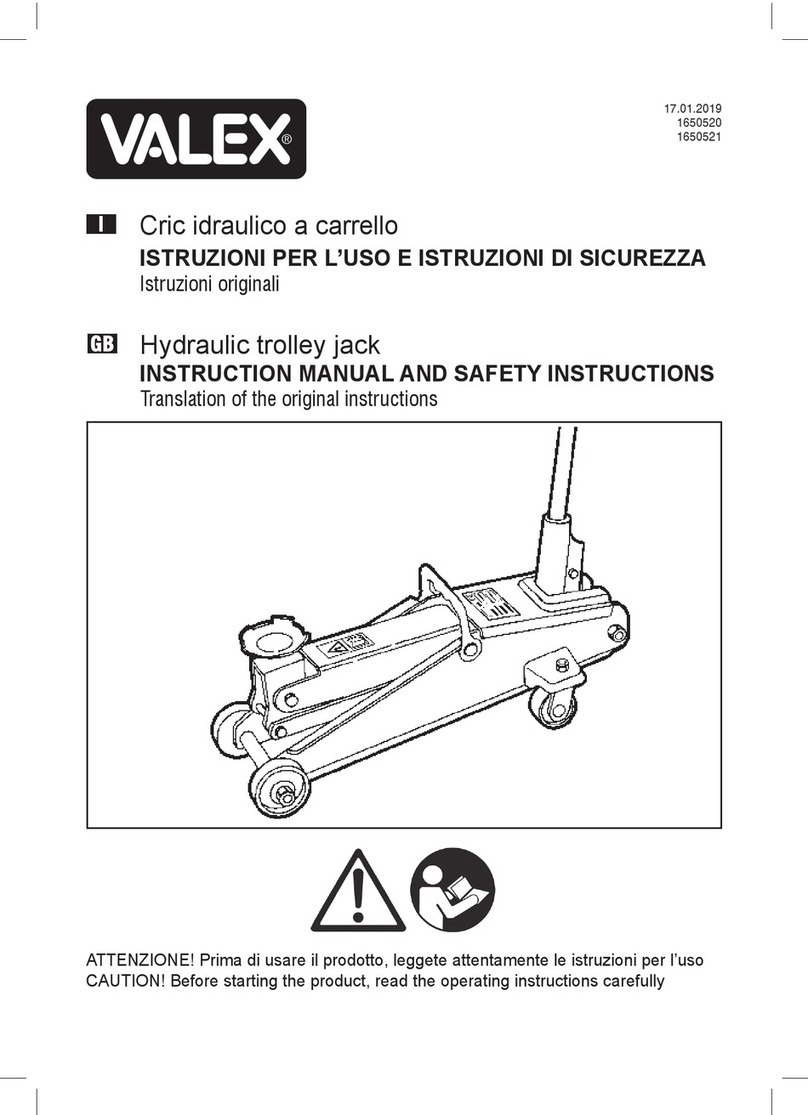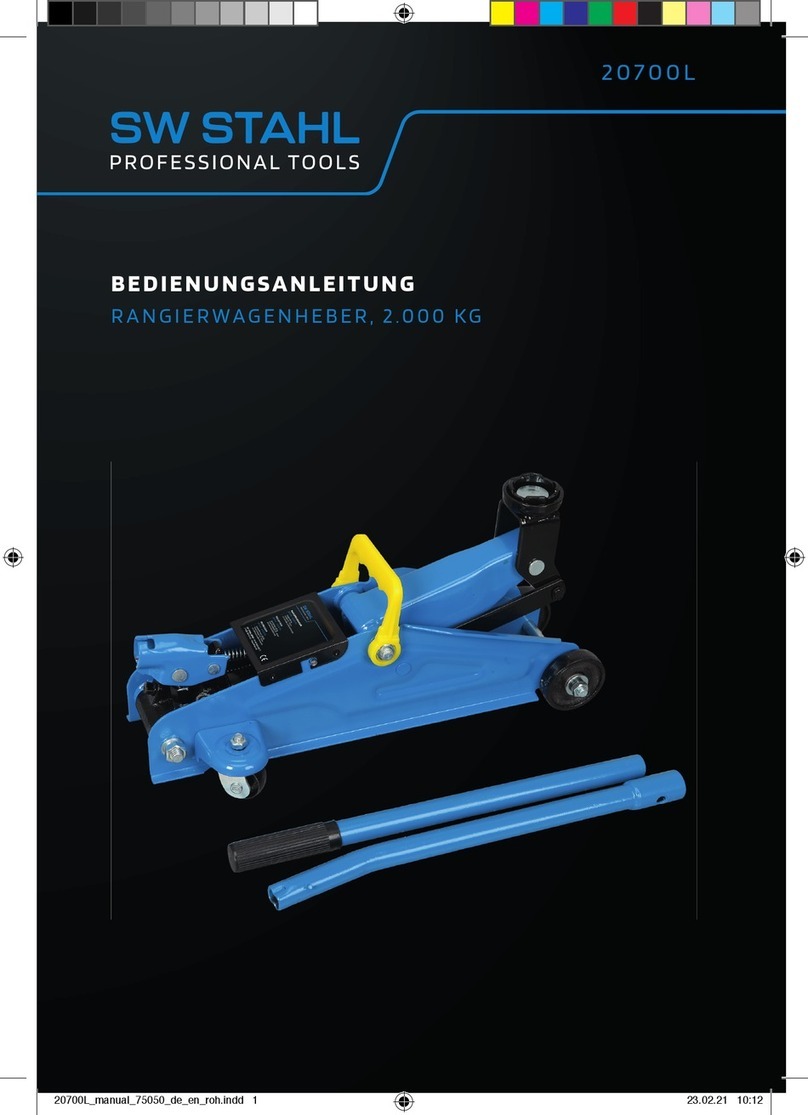
E
1 CONSIGNAS DE SEGURIDAD
1.1 La carga a elevar no debe ser nunca superior a la fuerza nominal del gato.
1.2 El recorrido máximo del gato, que está indicado en la etiqueta, no debe ser nunca sobrepasado.
1.3 Asegure el vehículo o elemento a elevar contra cualquier tipo de deslizamiento, utilizando calzos en caso necesario.
1.4 El gato debe apoyarse en una superficie firme regular y horizontal. No utilice nunca el gato en posición inclinada.
1.5 El gato debe ser utilizado de forma que sea posible su maniobra sin que el usuario se vea obligado a introducir parte alguna de su cuerpo
debajo del vehículo. No se debe trabajar nunca debajo de un vehículo o de una carga elevada sin haberla sustentado antes con soportes
mecánicos u otros medios adecuados.
1.6 Está prohibido elevar personas con este aparato. Asimismo durante su uso no puede haber personas dentro del vehículo.
1.7 El operador debe vigilar el dispositivo de elevación y la carga durante todos los movimientos.
1.8 Antes de utilizar el gato, asegúrese de que no hay personas dentro del vehículo a elevar, así como de que está debidamente frenado.
19 Consulte el manual de instrucciones del vehículo para posicionar correctamente el platillo de elevación del gato.
1.10 La carga a elevar debe estar siempre centrada sobre el platillo de elevación. Toda carga descentrada puede crear riesgos.
1.11 Durante la elevación y el descenso es necesario tomar todo tipo de medidas para evitar el desplazamiento de la carga del vehículo.
1.12 El gato es un dispositivo de elevación y por lo tanto no debe ser utilizado para trasladar el vehículo o la carga elevada.
1.13 El incumplimiento de estas consignas esenciales de seguridad puede ocasionar daños al usuario, al gato o al elemento a elevar.
1.14 Como medida de seguridad contra sobrecargas, el gato está provisto de una válvula de sobrepresión que ha sido tarada en fábrica. Esta
válvula no debe ser en ningún caso manipulada.
2 USO Y FUNCIONAMIENTO
2.1 Introduzca la palanca en su alojamiento de acuerdo con el dibujo ( ilus. 1).
2.2 Antes de utilizar el gato, es necesario purgar el circuito hidráulico para eliminar el aire del sistema de válvulas. Para ello, gire la palanca en el
sentido de las agujas del reloj. Manténgala en esa posición y bombee varias veces. Suelte luego la palanca, que retornará
automáticamente a su posición inicial (principio “ Hombre muerto “) con lo que el gato está listo para efectuar la elevación.
2.3 Para facilitar su aproximación rápida a la carga, nuestros gatos están provistos de un pedal de bombeo.
2.4 Para descender la carga, gire lentamente la palanca en sentido de las agujas del reloj. Para evitar descensos bruscos, el gato está provisto
de un sistema que regula y controla automáticamente el descenso (L.C.S).
2.5 Una vez utilizado el gato, manténgalo almacenado con el pistón y la bomba recogidos.
3 MANTENIMIENTO
3.1 Engrase periódicamente los ejes y las partes móviles del gato.
3.2 Mantenga siempre el gato limpio y protegido de ambientes agresivos.
3.3 Verifique el nivel de aceite con el pistón totalmente recogido y repóngalo en caso necesario, según el volumen indicado en la tabla.
IMPORTANTE: Un exceso de aceite puede impedir el funcionamiento del gato.
3.4 Utilice aceite de uso hidráulico, tipo HL o HM, con un grado ISO de viscosidad cinemática de 30 cSt a 40ºC o de una viscosidad Engler de 3
a 50ºC. MUY IMPORTANTE: No utilice nunca líquido de frenos.
3.5 Para pedidos de piezas de recambio, indique la referencia de la pieza según el dibujo. Disponemos de un juego de repuestos que contiene
exclusivamente los retenes y las juntas del gato.
4 REPARACION.
Tanto el mantenimiento como la reparación de este gato deben ser llevados a cabo por personal cualificado que, por su formación y
experiencia, sea conocedor de los sistemas hidráulicos utilizados en estos aparatos.
GB
1 SAFETY INSTRUCTIONS
1.1 The load to be lifted should never exceed the rated capacity of the jack.
1.2 Never operate the jack beyond its maximum stroke indicated on the label.
1.3 Park the vehicle or load to be lifted on a flat firm surface and place wedges under the wheels to stop movement.
1.4 Position the jack on a solid, even and horizontal surface, never use the jack on a slope.
1.5 The jack should be positioned so as to avoid the user from having to operate it under the vehicle. Every vehicle lifted by a jack should always
have a secondary safety support, such as mechanical stands.
1.6 Never lift a person with this jack. Ensure that all persons are out of the vehicle before jacking.
1.7 It is necessary that the operator can watch the lifting device and the load during all movements.
1.8 Before using the jack, make sure that the vehicle is free of passengers, handbrake engaged and the engine is off.
1.9 Consult the vehicle handbook for jacking points.
1.10 In the absence of jacking points the trolley jacks should be positioned under the centre of the load. Failure to position it correctly may cause
the load to be unbalanced, resulting in possible equipment/load damage and operator injury.
1.11 It is imperative that all possible precautions are taken to avoid unexpected movement of the vehicle load when it is being lifted.
1.12 The jack is a lifting device only and should never be used to move the vehicle or load.
1.13 If these basic rules are not followed, injury to the user, the jack or the load being lifted may result.
1.14 As an additional safety feature the jack is equipped with a valve to prevent the unit from being overloaded.This unit is factory set and must
not be tampered with.
2 USE AND OPERATION
2.1 Insert the handle into the socket as shown in the illustration (illus. 1).
2.2 Before using the jack, it is necessary to purge air from the valve system.This is carried out by turning the handle clockwise and, whilst held in
this position, pumping the jack several times.Release the handle and it will automatically return back to the initial position ( “Deadman”
principle ).The jack is now ready to be used.
2.3 These jacks are fitted with a foot pedal that gives a faster approach to the load.
2.4 To lower the load, turn the handle slowly clockwise. Our jacks are fitted with a safety device that only permits the load to be lowered smoothly
by automatically controlling the speed at a rate dependant upon the size of the load ( L.C.S.).
2.5 After use, make sure the lifting beam is fully retracted.
3 MAINTENANCE
3.1 Lubricate all moving parts at regular intervals.
3.2 Always keep the jack clean and protected from aggressive conditions.
3.3 If you have to replace the oil, the correct volume is indicated in the parts list. Make sure the piston is fully retracted.
IMPORTANT: An excess of oil will render the jack inoperative.
3.4 Use only hydraulic oil, type HL or HM, with an ISO grade cinematic viscosity of 30 cSt at 40ºC or an Engler viscosity of 3 at 50 º C.
VERY IMPORTANT: Never use brake fluid.

